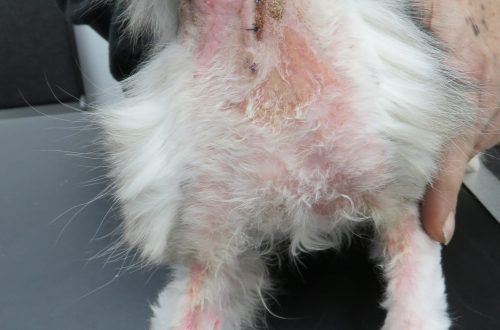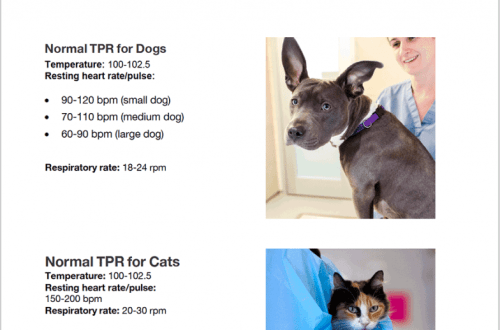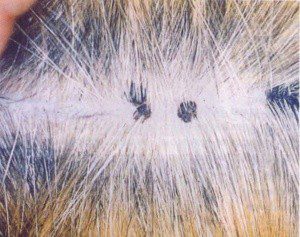
What to do if a cat is bitten by a snake?

Contents
- What poisonous snakes are found in Russia?
- Is the bite of a viper and other snakes dangerous for a cat?
- Bite symptoms
- What to do if your cat is bitten by a snake – 6 Steps
- Help from veterinarians
- Possible consequences of snake bites
- What not to do when bitten by a snake?
- How to prevent a snake bite?
- Answers to frequently asked questions
What poisonous snakes are found in Russia?
Fortunately, the list of poisonous snakes that live in Russia is small. Mostly they are represented by the Viper or Viper family (from lat. Viperidae). Most of these snakes are non-aggressive and they attack, as a rule, when it is impossible to escape.
For humans, viper bites are in most cases harmless, deaths are rare, and bite symptoms resolve within a few days. The exception is gyurza, the poison of which is extremely toxic and, in the absence of timely assistance, can lead to death. But the range of this snake is not as extensive as the same common viper.
Common Viper. It is the most common type. It is found in swamps and on the banks of reservoirs, in fields and forests. In some regions it can be found within the city. It is most active in late spring. The length of an adult snake is about half a meter, the color is from brown to gray with a zigzag pattern on the back. There are also black vipers (Nikolsky’s viper).

Steppe Viper not much different from the common one, has a slightly different pattern on the body and prefers the steppe and forest areas.

Caucasian viper can be found in the Krasnodar Territory. Its color is brighter – from orange-yellow to red-brick.

Source: www.clasbio.ru
Shitomordnik. In Russia, it occurs in the lower reaches of the Volga and Don rivers and to the Primorsky Territory in the east. A medium-sized snake with a wide head, which is covered with large shields on top, forming a semblance of a shield. Within the range it is found everywhere, even on the outskirts of villages and cities.

Source: ru.wikipedia.org
Viper. The largest of the vipers and the most dangerous snake in Russia. It is found in the North Caucasus and Dagestan. Depending on the habitat, its color is from gray to brown-brown. Can be aggressive if too close. It is able to make jumps to the length of its body and climbs trees well.

Source: ru.wikipedia.org
Tiger already. It is found in the Far East in marshy and damp areas. A conditionally poisonous snake, because its poisonousness depends on the nature of the diet, and its teeth are located deep in the mouth.

Is the bite of a viper and other snakes dangerous for a cat?
Even the bite of a common viper can be extremely dangerous for a cat. However, based on a number of literary sources, cats are quite resistant to snake venom compared to other domestic animals.
In cats, snake bites are recorded much less frequently than in dogs. Perhaps also because most often free-roaming and stray cats encounter a snake. If a snake has bitten a cat, then, with a high degree of probability, he will run away and hide. Its symptoms may not be noticed by the owner or may not be related to the bite.
Some of these animals probably die or recover on their own without an established diagnosis.
Viper venom, in addition to a pronounced local reaction, can lead to impaired blood clotting. Also, after snake bites, there is a risk of developing an anaphylactic reaction (acute allergic reaction). All of these conditions are potentially fatal to a cat if not treated promptly by a veterinarian.
There is little information in the literature on the survival of pets after viper bites. But according to some studies, mortality is from 6 to 22%.

Bite symptoms
Most often, snake bites in cats occur in the forelimbs, head (muzzle) and neck. The severity of the symptoms will depend on where the bite fell, on the weight of the animal, what was the amount of poison that got into the wound. The toxicity of the poison depends not only on the type of snake, but also on its habitat, season and other factors. Some of the snake bites will be “dry”, ie. without poison.
If a cat is bitten by a viper, local symptoms include pain, swelling, hematoma and develop quite quickly. Anaphylaxis to venom components can also develop within minutes of being bitten. Over the next day, there may be a violation of blood clotting (coagulopathy), massive bleeding, damage to the kidneys, liver, pancreas, shock, collapse (critical, deadly pressure drop).

Possible snake bite symptoms:
Swelling at the site of the bite, which may develop gradually. If a snake has bitten a cat in the face, it may be difficult to breathe and take water and food.
Sometimes puncture wounds in the bite area are noticeable
Pain, lameness in the event that a snake has bitten a cat in a limb
Hematomas
Fever
Salivation
Dyspnea
Impaired coordination
Vomiting and diarrhea
Abnormal bleeding due to a bleeding disorder.
Hypotension (decrease in pressure) and, as a consequence, severe lethargy and depression.
There can be a long period of time between being bitten and going to the vet. It is not always obvious that it was the snake that bit the cat. A pet may come to the clinic in a severe state of shock, with bleeding and DIC (a severe bleeding disorder that leads to bleeding and blood clots).

What to do if your cat is bitten by a snake – 6 Steps
Take a photo. Take a photo of the snake if you saw one or if you think it was the one that bit the cat. This may be required to more accurately determine its type and assess the consequences of a bite. Do not risk your own safety and do not come close to the snake! Sometimes in a panic, you can mistake an ordinary grass snake or copperhead for a poisonous snake.
Examine the animal. This will help to understand whether the bite was committed, and in what place it fell.
Treat the bite site. Can be treated with a disinfectant: for example, an aqueous 0,05% chlorhexidine solution or simply rinsed with water.
Let’s drink. Offer water to the cat (including on the way to the clinic), but do not force it to drink.
Contact your veterinarian immediately!
Drugs that can be administered before visiting the clinic:
Diphenhydramine: Diphenhydramine 1% solution (regular pharmacy), Allervet, 1% solution (veterinary pharmacy) is used at a dose of 2 mg / kg (0,2 ml per kilogram of body weight) intramuscularly or subcutaneously every 8 hours during the first day after the bite.

Help from veterinarians
The treatment of a cat after a snake bite will depend on the manifestations of the animal for examination. If symptoms of anaphylaxis appear, then his treatment will be carried out as an emergency patient in a hospital setting and will include the use of adrenaline, oxygen support, electrolyte infusions, etc.
When we are not talking about an anaphylactic reaction, the examination and treatment protocol may include the following measures and drugs (may vary depending on the specific rules of each individual clinic):
General clinical and biochemical blood tests.
Tonometry (pressure measurement).
Coagulogram (assessment of blood clotting).
Liquid therapy with infusion solutions. If DIC is suspected, plasma transfusion (donor) is required.
In case of massive bleeding, a blood transfusion is performed.

Antimicrobial therapy. Necessary, because there is a high risk of bacterial complications due to bacteria on the snake’s teeth and the effect of the poison on the tissues. Ampicillin or Amoxicillin + Clavulanic acid is used.
An antihistamine – diphenhydramine – to reduce inflammation and a likely allergic reaction.
Steroids: Prednisolone or Dexamethasone. The use of glucocorticosteroids for snake bites is still a controversial issue. They are used in cases of shock and severe swelling, especially if the snake has bitten the cat in the area of the muzzle, neck and throat, as they can reduce and slow down the inflammation and tissue damage. In previous studies on the use of steroids in dogs for snake bites, they either did not show their effectiveness, or their effectiveness was questionable.
No such studies have been conducted in cats.
Antidote. It is a specific treatment, that is, it neutralizes the effect of the poison. It is widely used in some countries and is included in veterinary treatment protocols after snake bites.
In Russia, the use of antivenom against viper bites (“Antitoxin of common viper venom”) is not widespread in veterinary medicine. The drug is not readily available in retail stores, and no studies have been conducted on its use in cats. In itself, the introduction of antitoxin can lead to an anaphylactic reaction.
Painkillers are used as needed, with severe pain. Most often it is metamizole (Miramizol, Analgin), meloxicam (Meloxidil, Loxicom, Meloxivet), robenacoxib (Onsior), etc.
Monitoring (observation) in the clinic during the day after the bite. It will include not only visual monitoring of the pet’s condition, but also blood tests (general clinical and biochemical) and pressure measurement.
Possible consequences of snake bites
Abscess and phlegmon
In the oral cavity of snakes, like other animals, bacteria are present. If a snake has bitten a cat, the risk of developing a bacterial soft tissue infection is quite high. It can occur in the form of an abscess (limited inflammation) or phlegmon (diffuse inflammation without clear boundaries). Given that the site of a snake bite can take quite a long time to heal, the first symptoms of a bacterial complication are easy to overlook.
Treatment of an abscess is complex: an opening and cleansing of the abscess cavity is performed, and antibiotics are prescribed. With phlegmon, it is often necessary to install drainage, which will facilitate the outflow of purulent contents from the wound.

Necrosis
Due to massive tissue damage after the poison enters, their nutrition is disturbed and death may begin – necrosis. The skin in the place of necrosis changes color: it becomes gray or black, dries, wrinkles and then is rejected. Surgical treatment of necrosis: dead areas are removed and cleaned to the boundaries of healthy tissue. Sometimes reconstructive surgery is needed. In the event that the necrosis was extensive and large skin flaps had to be removed, the lost areas are replaced using special surgical techniques. In parallel, antibiotics and painkillers are prescribed.

What not to do when bitten by a snake?
suck the poison out of the wound. If a common viper has bitten a cat, it is unlikely to be dangerous in terms of ingestion of the toxic proportion of the poison through the mouth, but it is not safe from the point of view of general hygiene. Also, a cat in stress and pain can perceive such an action as a threat and attack.
Burn the bite. This will not affect the snake’s venom in any way, but it will cause a burn.
Apply tourniquet when bitten on a limb or tail. This will most likely lead to necrosis.
Drink vodka to an animal. For some reason, vodka is regularly present in a wide variety of folk recipes for everything, including as a remedy for snake bites. But the very drinking of alcohol to an animal (and a person in a similar situation) will lead to additional severe intoxication.

How to prevent a snake bite?
Free-roaming and stray cats are most at risk of being bitten. Many cats in the warm season spend time in the country.
With free range on the site, there is a risk of meeting a cat with a snake. To reduce the risk of being bitten, you can choose to walk under control, on a harness, avoiding tall grass, bushes.
When meeting with a snake, you do not need to try to catch it and drive it away, stomp your feet, make noise, wave your arms. It is important to carefully move to a safe distance without making sudden movements. If your cat is nearby, call her, distract her, pick her up and move to a safe place.
If you see a cat playing with a snake, don’t try to take it away. After all, the probability of a bite is high, and an agonizing snake releases more poison when bitten. You can try to distract and lure the cat towards you with a voice, a treat, a toy from a safe distance.
If you know that in an area where a cat walks a lot of snakes, it is important to regularly inspect the animal after each walk. Are there signs of a bite: edema, bruising, etc., and also know the contacts and work schedule of the nearest veterinary clinics.
Answers to frequently asked questions
Sources:
Gary D. Norsworthy “The feline patient” (The Cat Patient, Fifth Edition), 2018
“Poisonous snakes of Russia”, Rospotrebnadzor website // http://cgon.rospotrebnadzor.ru/content/62/1397/
I. Yankin, M. Schaer, M. Johnson, T. Meland, L. A Londono. “Persistent intoxication with snake venom in a cat”, Zooinform veterinary medicine, 2018 // https://zooinform.ru/vete/articles/persistiruyushhaya-intoksikatsiya-yadom-zmei-u-koshki/
Kobzeva P. Yu. “Viper bite and anaphylaxis. Emergency help”, “Veterinary Petersburg”, No. 3-2017 // https://spbvet.info/arh/detail.php?ID=380
Y. Bruchim, Approach and Management of Viper Snake Bites in Dogs and Cats, World Small Animal Veterinary Association Congress, 2018 // https://www.vin.com /
McIntyre D.K., Drobats K., Haskings S., Saxon W. “Emergency and small animal intensive care”, 2018






